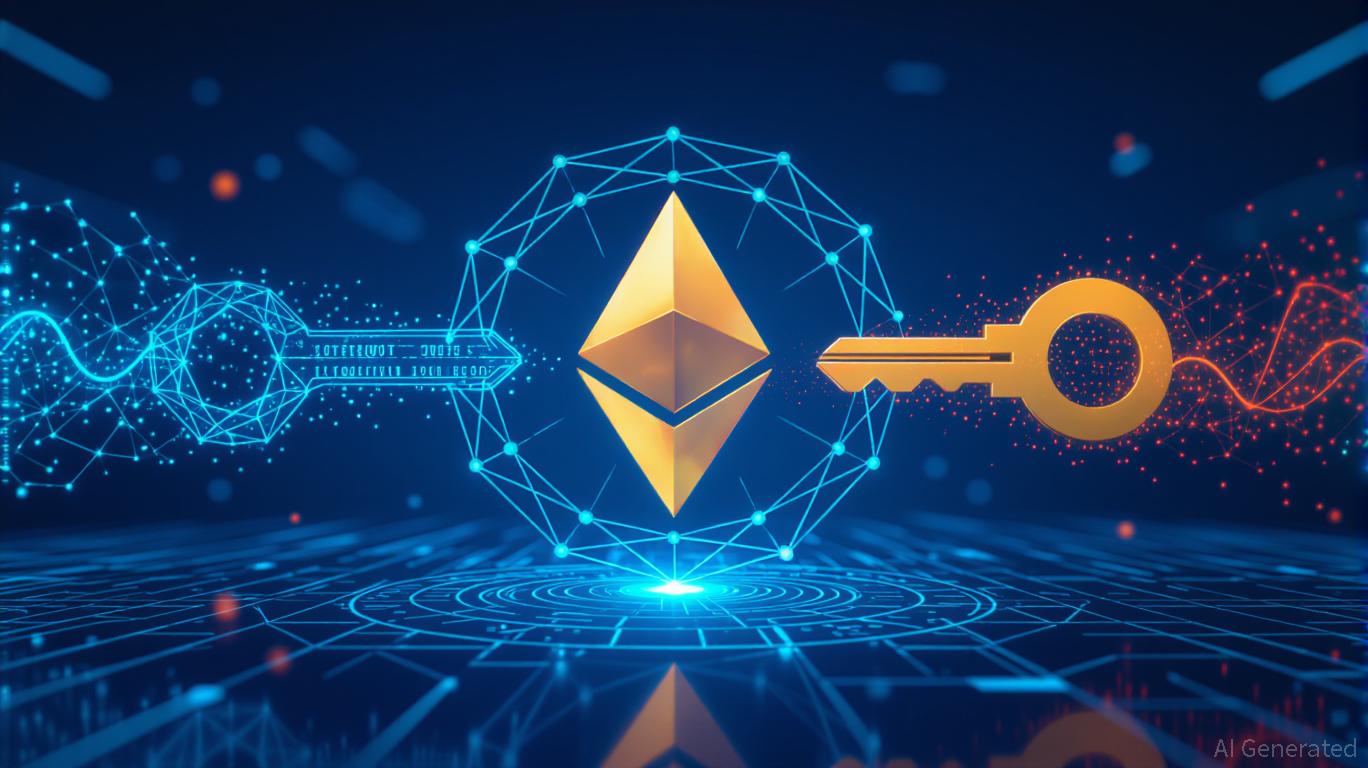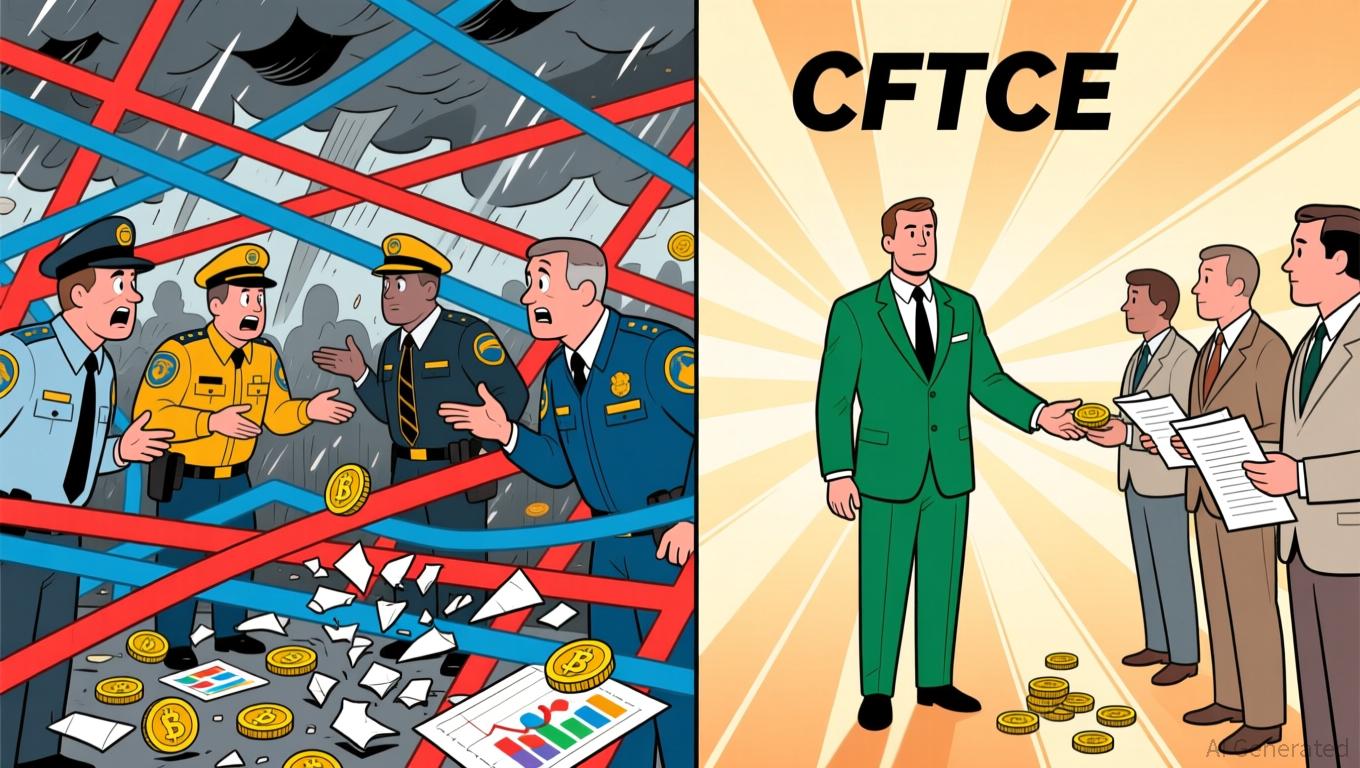Vitalik Buterin's Latest Advocacy for ZK Technology in Ethereum: Evaluating the Impact of ZK on Ethereum's Future Scalability and Investment Potential
- Vitalik Buterin prioritizes ZK proofs to enhance Ethereum's scalability, privacy, and quantum resistance amid institutional demand and post-AGI risks. - Ethereum's "Lean Ethereum" upgrades remove modexp precompiles and adopt GKR protocol, boosting TPS and quantum security while temporarily affecting gas fees. - ZK layer 2 solutions like Lighter (24k TPS) and ZKsync (15k TPS) drive institutional adoption, with 83% of enterprise smart contracts now using ZK-rollups. - ZK-driven infrastructure (ZKsync, Star
ZK’s Technical Role in Ethereum
Buterin’s support for ZK technology is embodied in Ethereum’s “Lean Ethereum” initiative, which emphasizes both efficiency and resistance to quantum threats. A major update is the elimination of the modexp precompile—a component that, according to a
Additionally, Ethereum is adopting the GKR (Goldreich-Krawczyk-Rabin) protocol, which, as detailed in the Bitget report, allows for 2 million Poseidon2 hash computations per second on standard consumer hardware. This leap not only speeds up transaction validation but also strengthens Ethereum’s defenses against quantum computing attacks—a growing issue in the era after AGI, according to the same source. Buterin has highlighted that such breakthroughs are vital for Ethereum’s continued relevance as cybersecurity and biosecurity concerns increasingly overlap, per the Bitget report.

ZK Layer 2: Performance and Enterprise Uptake
The effects of these technical changes are already evident in Ethereum’s layer 2 landscape. Lighter, a layer 2 protocol powered by ZK, reached 24,192 transactions per second (TPS) by late 2025, surpassing rivals like
Adoption by major institutions is accelerating. Deutsche Bank, Sony, and Citibank have all implemented Ethereum-based ZK-rollups to satisfy regulatory standards while maintaining high transaction throughput, as cited in the Bitget report. Mastercard has also teamed up with ZK-focused platforms to test cross-border payment solutions, per the Bitget report. By the end of 2025, ZK-rollups such as
Investment Outlook: ZK as a Key Asset Class
For those investing, Ethereum’s ZK transformation offers twofold potential: infrastructure investments and token utility. Projects such as ZKsync, StarkNet, and Brevis—each showing technical progress and ecosystem integration—stand out as strong contenders for long-term appreciation. Brevis, for example, uses ZK proofs to provide privacy-focused data feeds, a capability increasingly valued by DeFi platforms, as outlined in the Bitget report.
The wider Ethereum ecosystem is also reaping rewards. Analysts forecast that Ethereum ETFs, including BlackRock’s ETHA, will outperform
Nevertheless, challenges remain. Removing modexp precompiles could temporarily raise gas costs for some specialized applications, and quantum resistance is still more theoretical than proven, according to the Bitget report. Investors must also contend with regulatory ambiguity, as ZK’s privacy attributes may conflict with shifting compliance standards, as highlighted in the Bitget report.
Conclusion: The Path Forward with ZK
Vitalik Buterin’s embrace of ZK technology represents more than a technical adjustment—it’s a redefinition of Ethereum’s place in a decentralized, post-quantum era. By focusing on scalability, privacy, and institutional compatibility, Ethereum is establishing itself as the foundation of Web3. For investors, the opportunity lies in backing projects that share this vision while managing short-term risks. As ZK-based advancements continue to expand Ethereum’s potential, early investment in layer 2 infrastructure and utility tokens could deliver significant returns, especially for those with a medium- to long-term outlook.
Disclaimer: The content of this article solely reflects the author's opinion and does not represent the platform in any capacity. This article is not intended to serve as a reference for making investment decisions.
You may also like
Bitcoin News Update: Trump's Pause on China Tariffs Triggers Worker Protests Over Future of U.S. Shipyards
- Trump administration suspends China tariffs on shipbuilding imports, drawing labor union criticism over domestic industry risks and worker refunds. - 175 H-1B visa abuse investigations reveal $15M+ potential refunds, as unions warn of wage suppression and corporate favoritism in trade policies. - Square enables Bitcoin payments for 4M U.S. merchants, advancing crypto adoption while Trump dismisses inflation concerns and vows meatpacking crackdowns.

Bipartisan Legislation Assigns Crypto Regulation to CFTC to Clarify Oversight Uncertainty
- U.S. lawmakers propose shifting crypto regulation from SEC to CFTC via a bipartisan bill, reclassifying most digital assets as commodities. - The draft aims to resolve regulatory ambiguity stifling innovation, building on stalled House CLARITY Act efforts during the 38-day government shutdown. - Market optimism surged as shutdown relief pushed Bitcoin above $105k, with ETF outflows persisting amid anticipation of clearer CFTC-led oversight. - Critics warn of CFTC resource constraints, while proponents hi

Solana News Update: DevvStream Invests in SOL Despite $11.8M Deficit, Shows Strong Confidence in Sustainable Blockchain Prospects
- DevvStream Corp. (DEVS) disclosed holding 12,185 SOL and 22.229 BTC, staking SOL for 6.29% annualized yield amid a $11.8M fiscal 2025 loss. - The company launched a digital asset treasury via BitGo/FRNT Financial, securing $10M liquidity from a $300M convertible note facility. - Plans include a 2026 tokenization platform for carbon credits and Solana staking, aligning with its de-SPAC/Nasdaq listing strategy. - Despite crypto market outflows, DevvStream's staked SOL attracted inflows, contrasting broader